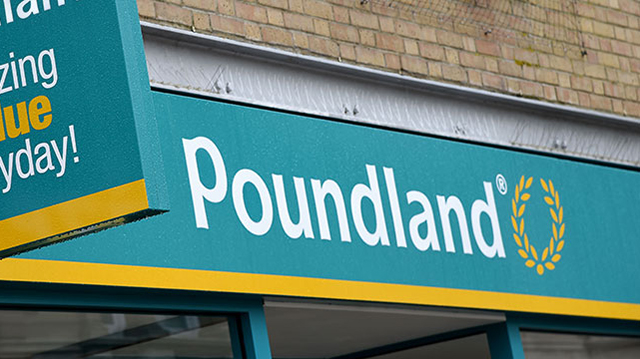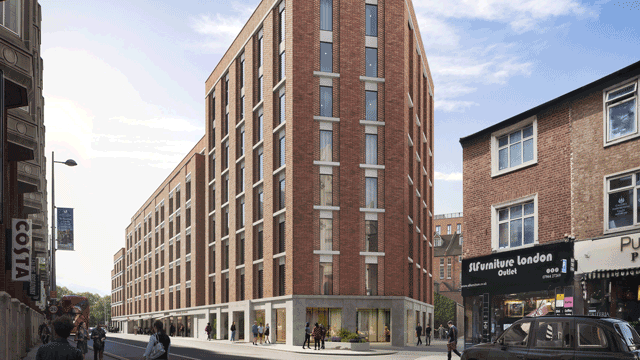While past failures made the idea of skyscrapers rising over the Mersey seem ridiculous, Liverpool is now set to get its first 30-storey tower, writes Adrian Morrison
Liverpool’s love affair with the skyscraper is viewed with mirth in certain quarters. And when you look at some recent proposals, it is hard not to see the funny side.
In 1998, Wiggins Group’s risible proposal for a £1bn, 90-storey, mixed-use tower was met with equal measures of sarcasm and incredulity by the rest of the world. Who would fill it? Who would fund it? Liverpool – whose tallest office building rises 13 storeys – is not New York, they said.
Less ridiculous, but equally unlikely, was Rumford Investments’ 2000 proposal for a £60m, 40-storey office block at a site on Rumford Square. Again, how would the figures stack up without massive public intervention? Rumford abandoned the plan in September 2000 and reverted to its original, planning-approved proposal for four smaller blocks.
But these derided attempts may have helped prepare the ground for a skyscraper finally to rise in Liverpool. The run of failed schemes has been broken with Beetham Organisation’s development of the former St Paul’s Eye Hospital site, which includes a 30-storey tower – set to be the tallest building in Liverpool. It equals Leeds 30-storey West Yorkshire Tower, which is being hailed as the tallest building in the North. Construction is under way, with completion scheduled for March 2004.
To understand the city’s fervour for tall buildings – if indeed it exists, which some dispute – a glimpse into the Liverpool psyche helps. The decline of shipping and manufacturing whittled away at the economy, status and self-assurance of the city for more than 40 years. From its illustrious past as one of the world’s wealthiest cities, it has become one of the most impoverished areas in Europe. What better to demonstrate its regeneration as a premier European destination than a monolithic statement tower?
Beetham development director James Hubbard believes that the recent increase in values achieved across all sectors in Liverpool has made its scheme feasible. He says: “A mixture of uses is what got our scheme off the ground. We used a Radisson hotel and 133 apartments to create synergy between the different elements of the project: you can share car parking and other facilities. Our success is based on this.”
Hotel values in Liverpool are very strong because of undersupply in the market. Similarly, residential values in the city centre have shifted from £135 per sq ft four years ago to more than £200 per sq ft today.
According to Nick Rice of Irving Rice, a similar approach to combining uses has worked for Mersey Dock Group’s Princes Dock development which has now achieved a headline rent of £16 per sq ft, up from a city high of about £13.
The right combination
“If it was entirely reliant on offices, it would not necessarily have happened,” he says. “Office rents are now at the level where developers can build without assistance if there is a prelet, but do not quite give sufficient incentive to build speculatively.”
Hubbard adds: “Princes Dock has taken things out of the realm of being unfundable. The grant assistance that had been vital for any scheme has become less important.”
The development of towers is being driven by the residential rather than the office market. If towers are to demonstrate commercial regeneration then, ultimately, they need to be office schemes, emulating Canary Wharf and even Manhattan.
However, there is just not the stomach among Liverpool’s developers or investors for office developments on that scale. Mersey Docks recently proposed a 17-storey block of flats for Princes Dock – which it hopes will contain Liverpool’s first £1m apartments – but has kept its office element low-rise.
David McLean’s proposal for a 20-storey tower in Herculaneum Dock in south Liverpool, meanwhile, is purely residential.
Originally, Beetham’s scheme included a 16-storey office block, approved by Liverpool council back in 1999. Since then, the office element has been scaled back to eight floors.
The constraining factor is Beetham’s ability to fund an office scheme, which Hubbard says is limited to around 140,000 sq ft, given the level of demand in Liverpool. The original proposal for 16 storeys was drawn up prior to last year’s downturn and the events of 11 September. Hardly any new, grade-A development is now going on in Liverpool.
Jim Gill, chief executive of regeneration agency Liverpool Vision, is dismissive of the need for tall office buildings and doubts that 140,000 sq ft in a tower would provide the right floorplate, anyway. “What we need is high-quality, large-floorplate speculative space, not an iconic office building,” he says.
The likelihood of getting a single tenant to take such a large space is also low, but – given Liverpool’s reliance on prelets and public intervention – it usually remains a prerequisite before large developments can proceed. Smaller buildings are what the market requires.
Despite these hurdles, many in the market feel there is a need to be innovative and to challenge preconceptions about what the market can and cannot sustain. Rice says: “The economic reality of a situation is one thing, but it is right to challenge and it is right to be bold. Being able to do something big and develop tall buildings says something about a city.”
He is not alone in his enthusiasm for testing boundaries. In April, planning consultant Llewelyn Davies unveiled plans for a 20-storey office block as part of a regeneration strategy for the city’s L1 postcode district. The report, commissioned by the L1 Partnership, suggests that the 197,000 sq ft (18,300m2) tower could be sited on the Norton scrapyard, although few regard this as a serious proposal.
Rice says that this would be a “courageous move”. Insignia Richard Ellis’s Chris Hennessy adds: “Press coverage has been positive, because it would be a better use than a scrapyard. I think people find huge buildings fascinating – you are awestruck by them. But it is a romantic fascination in many respects and they are always contentious.”
This particular proposal may find more detractors than supporters, not only because the present economics do not support such a scheme, but also because the site is thought to be too far outside the business core.
Liverpool Vision’s Gill is blunt: “The L1 tower scheme is unlikely – and that is an understatement. It does not bear any reality to the state of the market.”
A tower with Grace
A more likely site for a tall building – should the economics stack up – would be either the Littlewoods site in Old Hall Street or Mann Island at Pier Head, which is to be the site of the Fourth Grace scheme – so called because the site is just to the south of the Three Graces, namely the Royal Liver, Cunard and Port Authority listed buildings.
Liverpool Vision has invited proposals for Fourth Grace and is due to announce the shortlisted bids in August.
The planning brief is non-prescriptive, beyond a requirement for the scheme to tie in tastefully with the surroundings and have a commercial use, so should rents and demand rise sufficiently, a tall office building would be feasible.
The building is to be a “physical representation of the entrepreneurship of Liverpool”, says Gill. But he adds: “If there is an idea outside Liverpool that we all want big towers, it might be a source of amusement to people here.
“It is more about taking opportunities that have not been here for a long time, and about the appropriateness and quality of the development, as opposed to its scale.”










